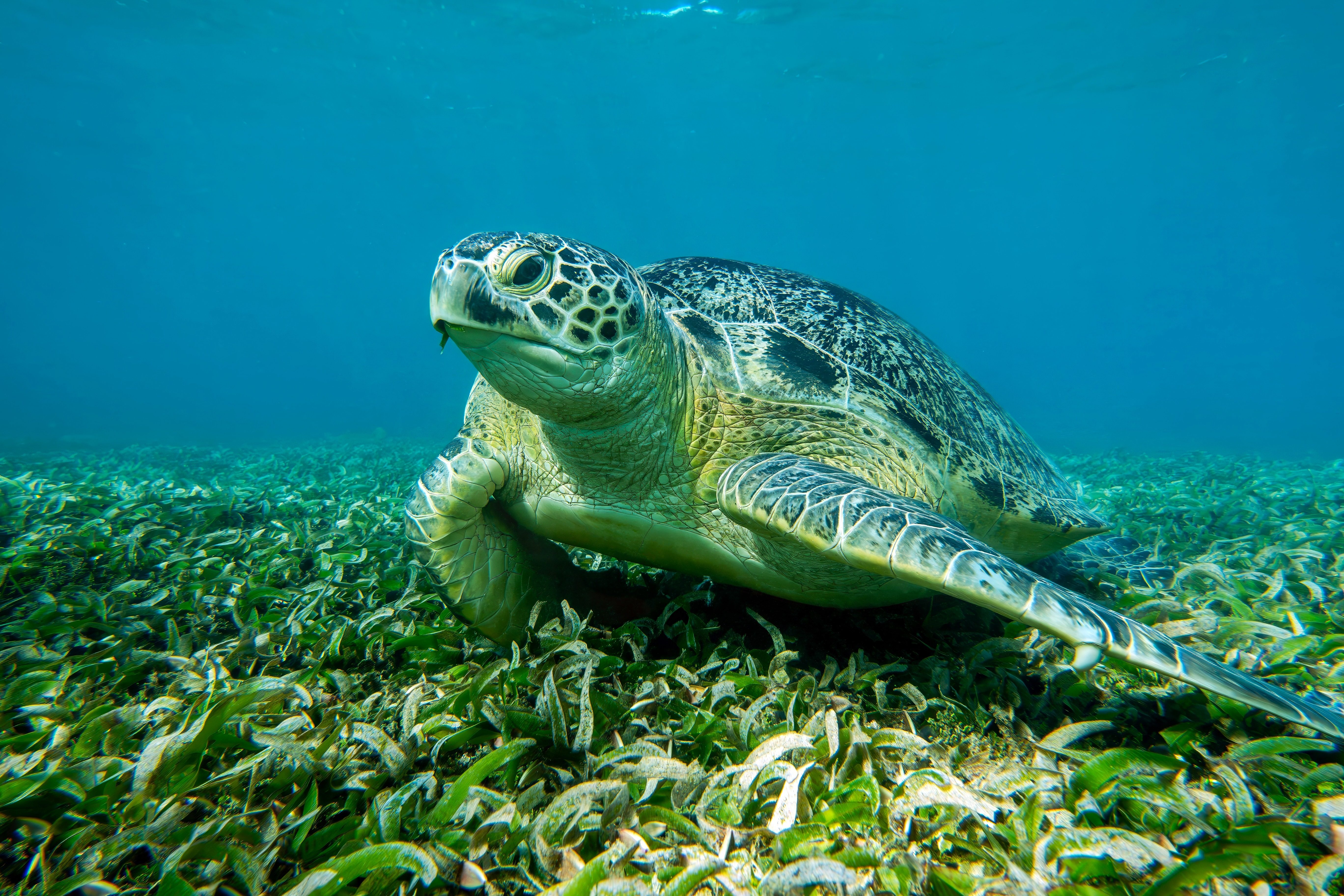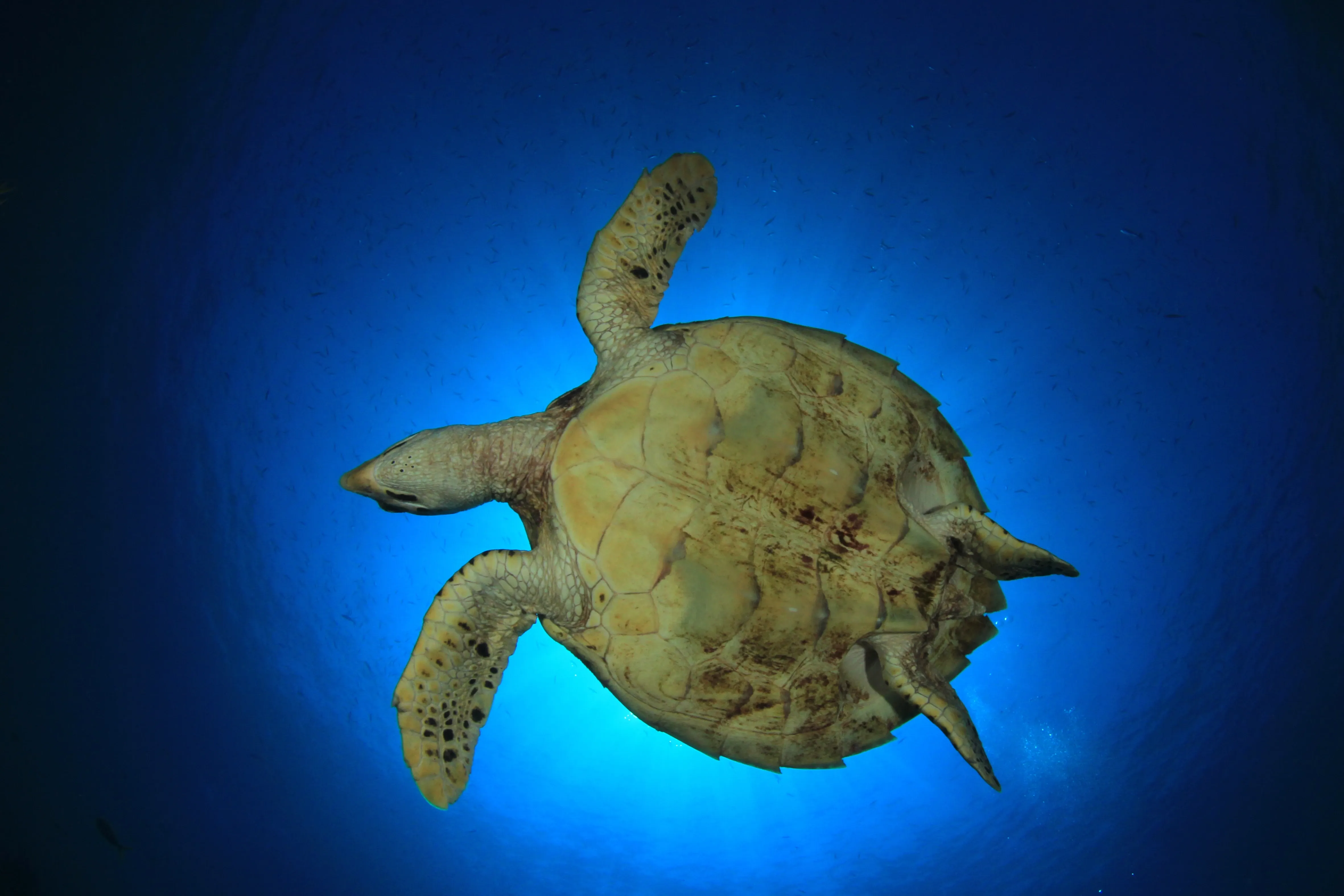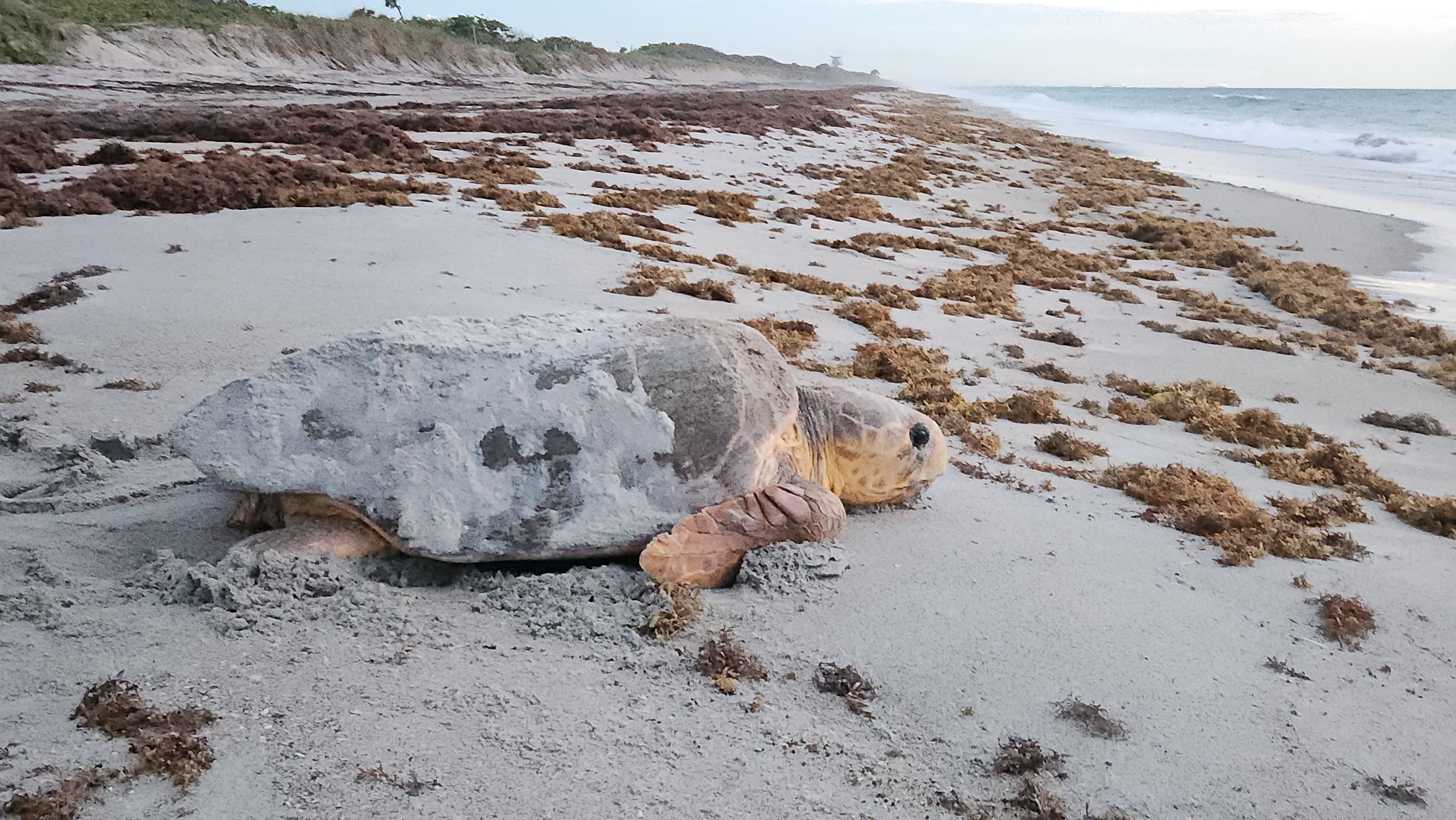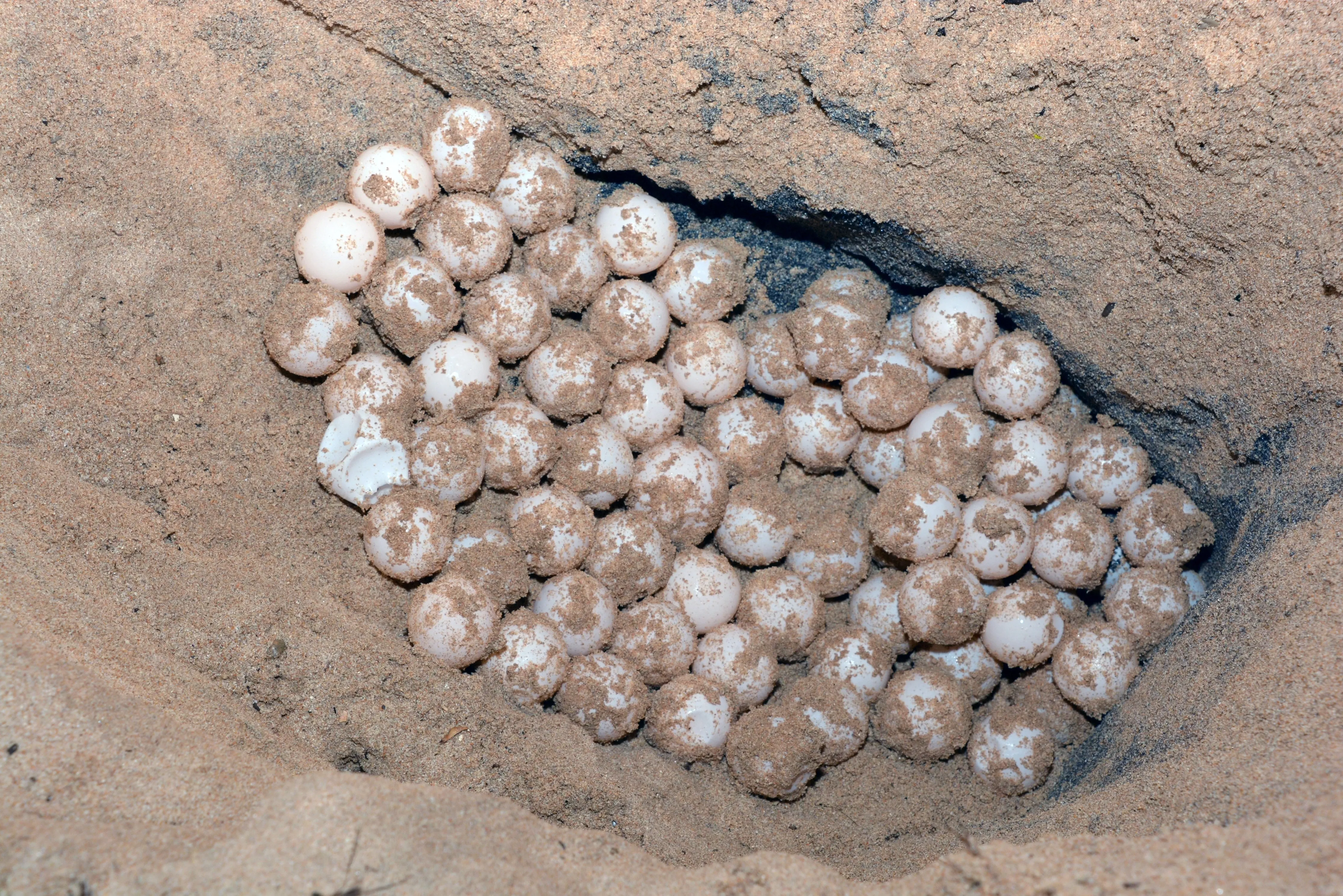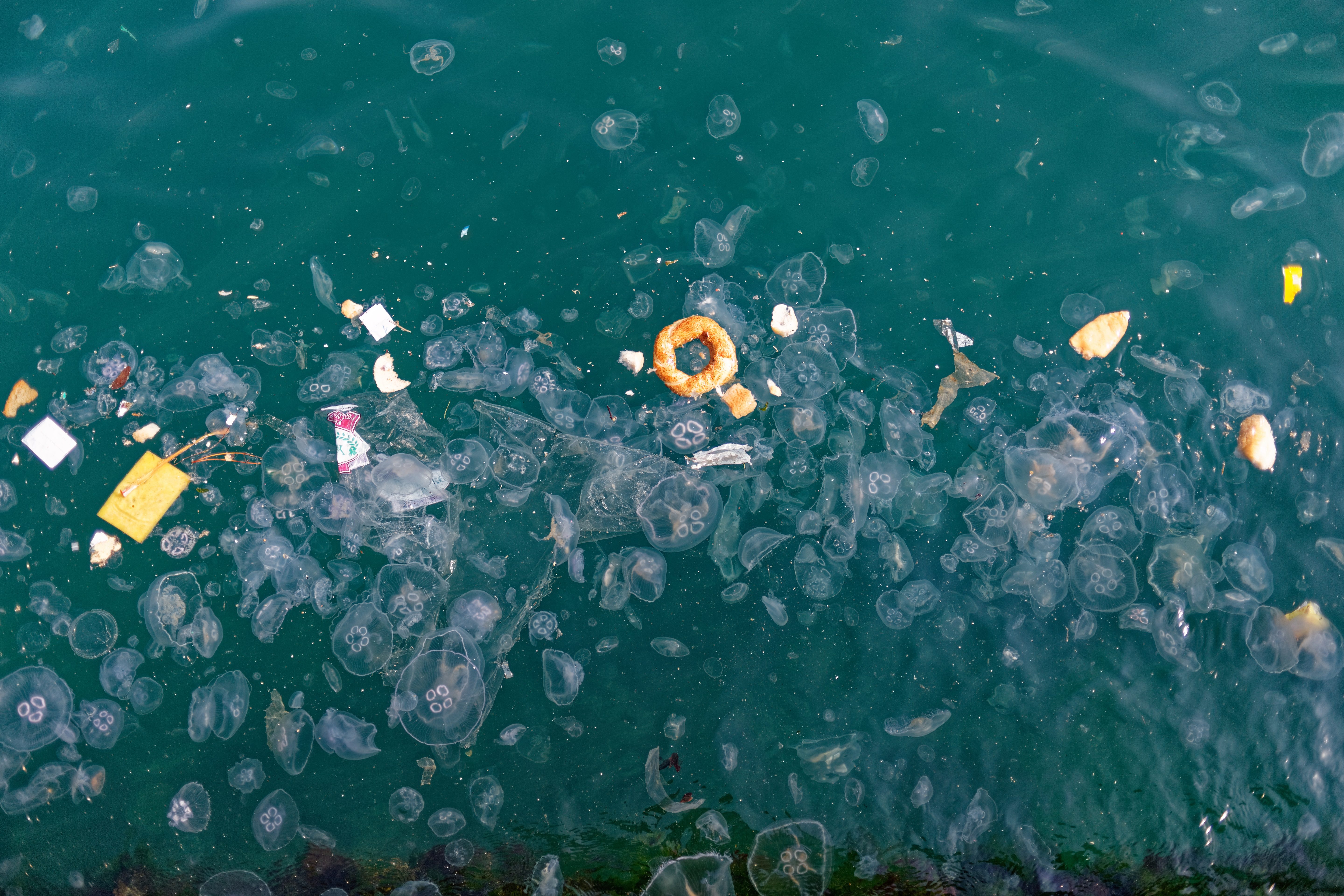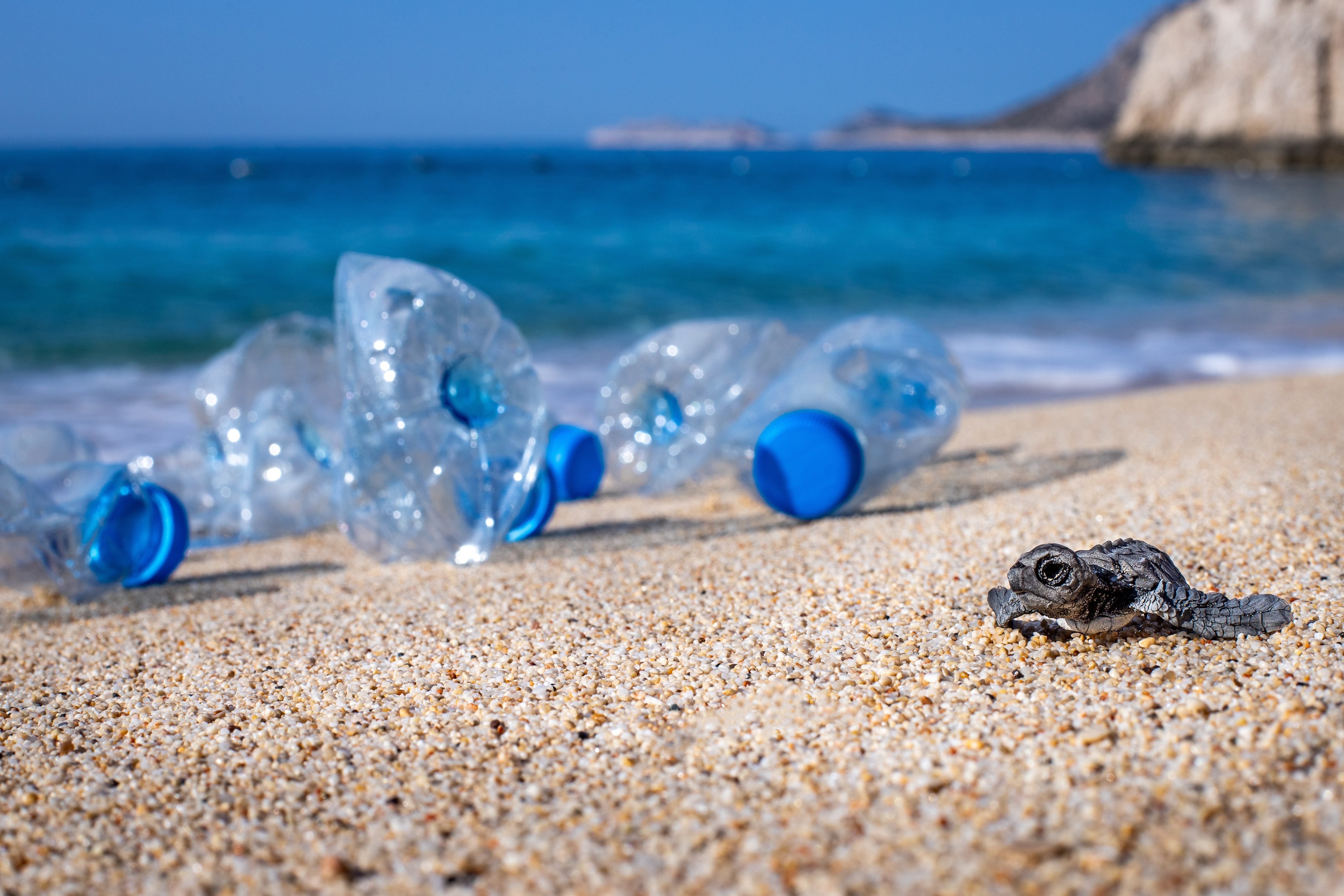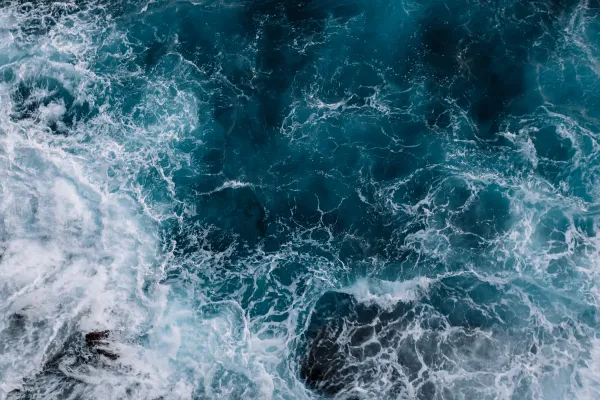Endangered species: Loggerhead sea turtle
Caretta caretta
The Loggerhead Turtle is the largest hard-shelled turtle found in Earth’s oceans. They are considered ‘endangered’ by most conservation groups as it battles human expansion, ocean pollution and indiscriminate fishing. Learn more about this shy and fascinating reptile here.
Description of the Loggerhead turtle
The Loggerhead Sea Turtle is one of five sea turtle species that can be found along the South American coast, along with the Hawksbill, Leatherback, Olive Ridley and Kemp’s Ridley turtles. The loggerhead is the largest of the hard-shelled, ocean dwelling chelonians, reaching a maximum size of over 2 metres in length, although the average is closer to 1 metre.
They weigh in at around 135kgs but the heaviest specimen recorded is a whopping 450kgs. Life expectancy can be up to 70 years, with sexual maturity and breeding age only reached from 15 years, depending on the region.
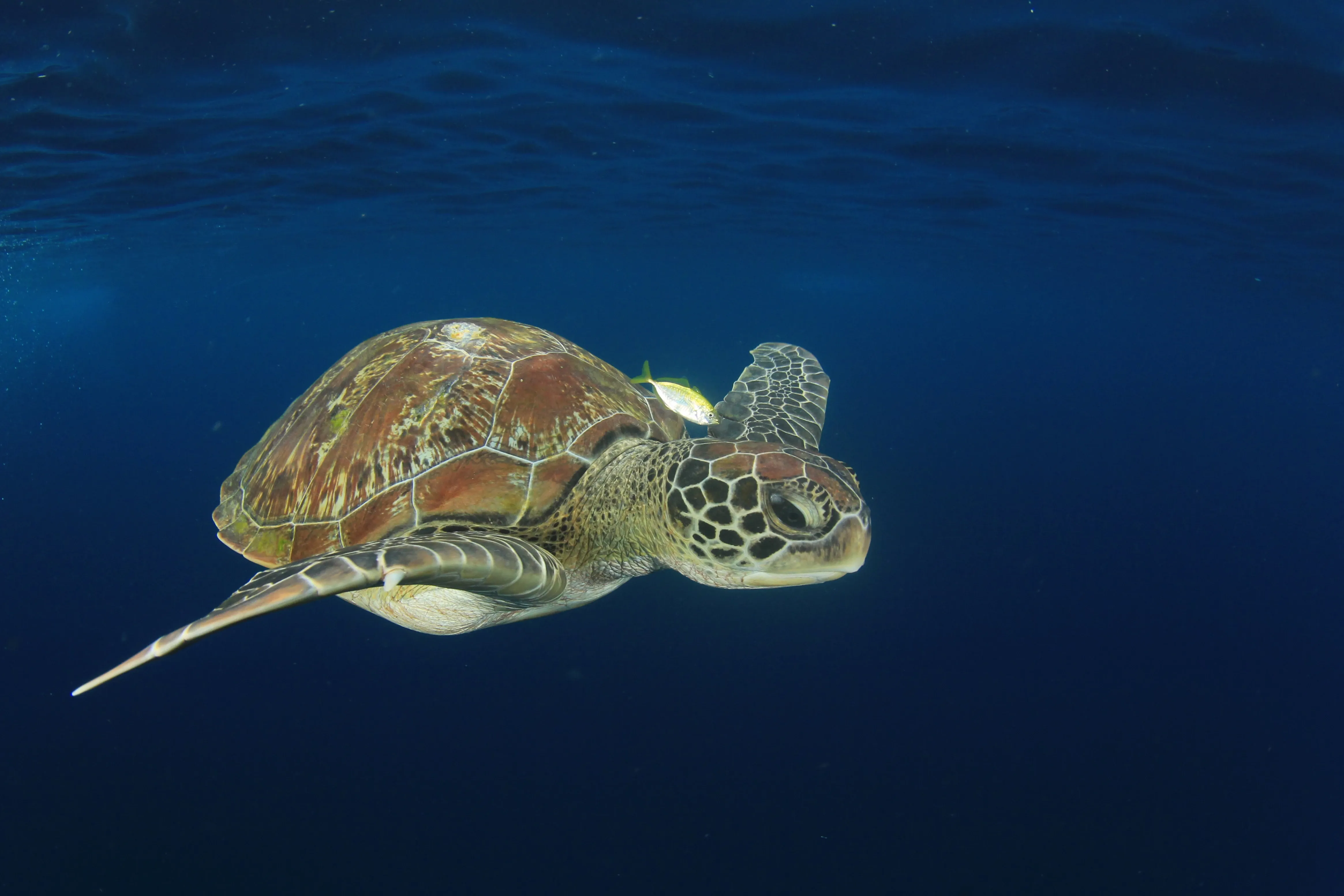
The loggerhead’s head and carapace (top part of the shell) range from yellow/orange to reddish brown in colour. Males and females are hard to separate in the field but males tend to have longer tails and claws (used to hold on to the female during the mating process), a shorter plastron (underside of the shell), a wider and less domed carapace and wider heads.
Like many turtles, the loggerhead also has Lachrymal glands in front of their eyes. These are secretory glands that help the turtles ride themselves of excess salts absorbed from the sea water since they are unable to excrete large volumes of salt via their kidneys.
There is a prevalent myth that sea turtles can cry tears, but this was borne from these whitish secretions building up in front of the eyes.
Habitat and distribution of the Loggerhead sea turtle
Loggerhead turtles are widely distributed and found across the globe in the Atlantic, Pacific and Indian oceans, as well as the Mediterranean Sea. The have a preference for subtropical and temperate regions although in the eastern Pacific, records exist ranging from Alaska right the way down the coast to Chile.
The most popular nesting sites can be found on the Florida coast, with close to 70,000 nests being recorded each year, but their nesting site range as far south as Brazil in South America. The second most popular breeding beaches can be found in the Middles Eastern country of Oman. Juveniles tends to spend most of their time in the shallow coastal waters but adults range across entire oceans.
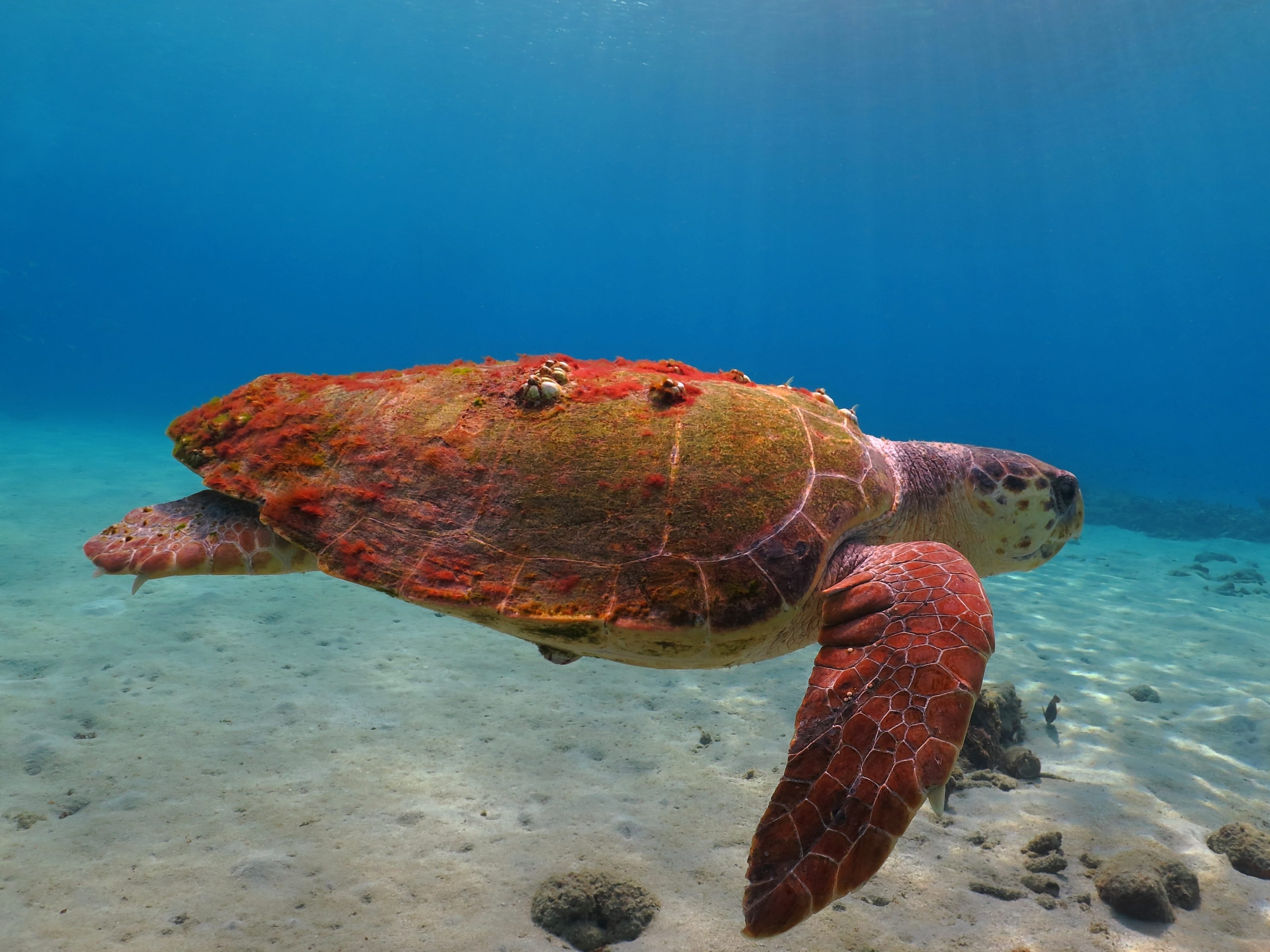
Pacific-bound turtles have been recorded migrating huge distances, with many turtles found along west coast of the Americas having hatched on beaches in Japan and Australia before embarking on the 8000km journey. Adults mature in these waters for around 15 to 20 years before making the return trip in order to breed and live out the rest of their lives.
Interestingly, magnetite, an iron rich mineral, has been detected in loggerhead turtles’ heads and is thought to interact with the Earth’s magnetic field to aid in navigation by using the field lines.
Diet of the Loggerhead sea turtle
Loggerhead turtles have a very varied diet, but the majority is carnivorous in form. Occasionally plant matter is consumed but the bulk of its diet is made up of bottom dwelling invertebrates such as gastropods (snails), bivalves and horseshoe crabs, especially from those living in the shallower coastal areas.
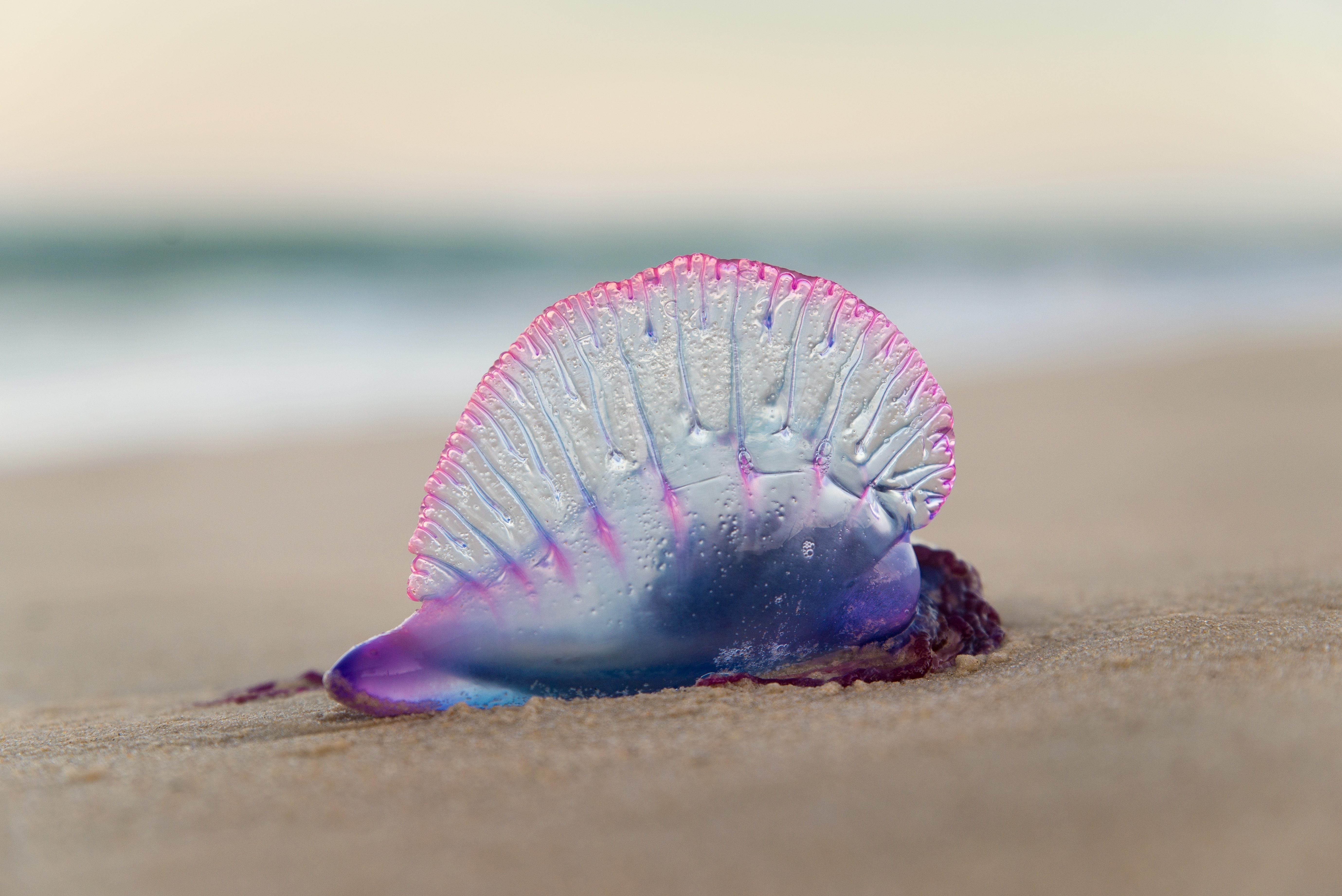
The loggerhead name is born from their large jaws and head which is designed to crush these well armoured prey items. They have also been recorded eating sponges, anemones, barnacles, fish and even jellyfish, including the deadly Portuguese Man ‘O War.
Unfortunately, their penchant for jellyfish means that they often accidentally consume plastic floating debris that floats on the surface. This can lead to a variety of issues including intestinal blockages and the release of toxic compounds. With the pollution of the oceans on the increase, this is just one of many threats facing the future of loggerhead turtle populations.
How the loggerhead turtle reproduces
Female turtles only achieve breeding age between 25-30 years of age. When the female is ready, males compete for her affections, with the winner mounting her, and grasping her under the shell with his elongated claws. Rival males will still try their luck during this stage and will nip at the mating male, sometimes damaging his flippers to the point that bone can be exposed!
Mating usually occurs in the in the open ocean during their return migration to nesting sites. It is normal for many males to mate with the same female and many clutches display multiple paternity. It is not unusual for a single clutch of eggs to contain sperm from 5 to 7 different males thanks to the females’ ability to store sperm for an extended time.
Once ready to lay, a female may produce 3 or 4 clutches, with an average of 110 eggs at intervals of a couple of weeks. Loggerheads climb on to the beach and clamber beyond the high tide marker before using their flippers to excavate a nest in the sand where the eggs are deposited, before covering the nest again.
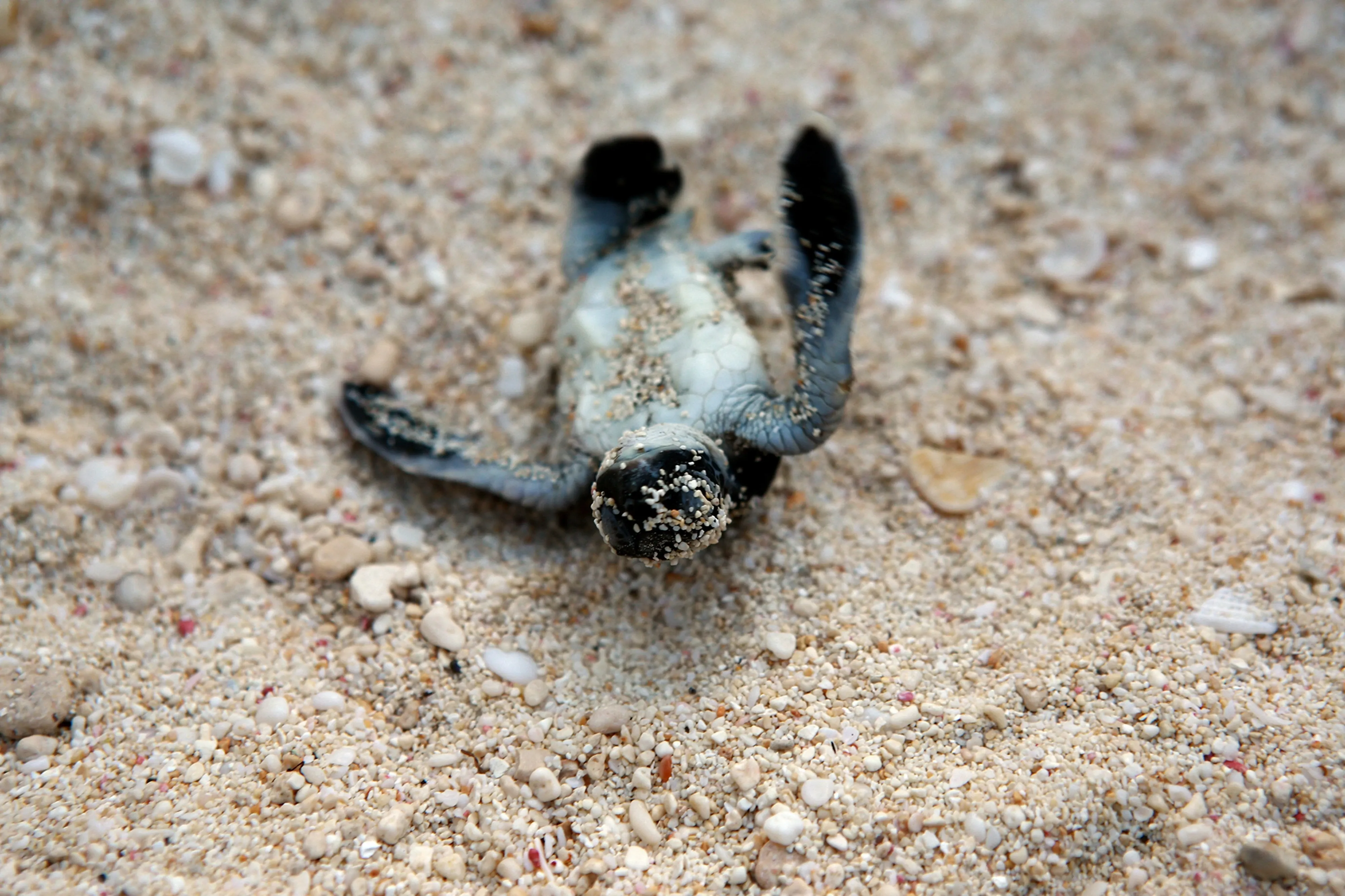
As with all Chelonians, the sex of the embryos is determined by the incubation temperature. This is known as ‘temperature dependent sex variation’. Eggs developing at temperatures of around 28°C will be males, those closer to 30°C will produce an even split of sexes, whilst those incubated at 32°C will be females. Interestingly, the opposite is true of crocodiles.
Incubation lasts around 80 days and the young hatch at night time to avoid the harsher daytime temperatures and predators. Upon emerging, the hatchlings head to the open ocean, using the lighter horizon of the moon and star reflection from the water to aid in their navigation.
Conservation and threats
Unfortunately, there are multiple threats to the loggerhead turtle population, most of them based around human activities. Currently, there are 9 distinct population segments, 4 of which are classified as ‘Threatened’, while the other 5 are listed as ‘Endangered’. Commercial trade of loggerheads and derived products is prohibited by CITES Appendix 1.
In some countries, turtle meat and eggs are still consumed regularly but the biggest threat to turtles is commercial fishing, with many drowning after being caught in longline nets, traps, dredges and pots, unable to surface for air. Some fisheries have now installed excluder devices to their nets in order to alleviate this problem, but indiscriminate fishing remains a huge problem for all turtle species.
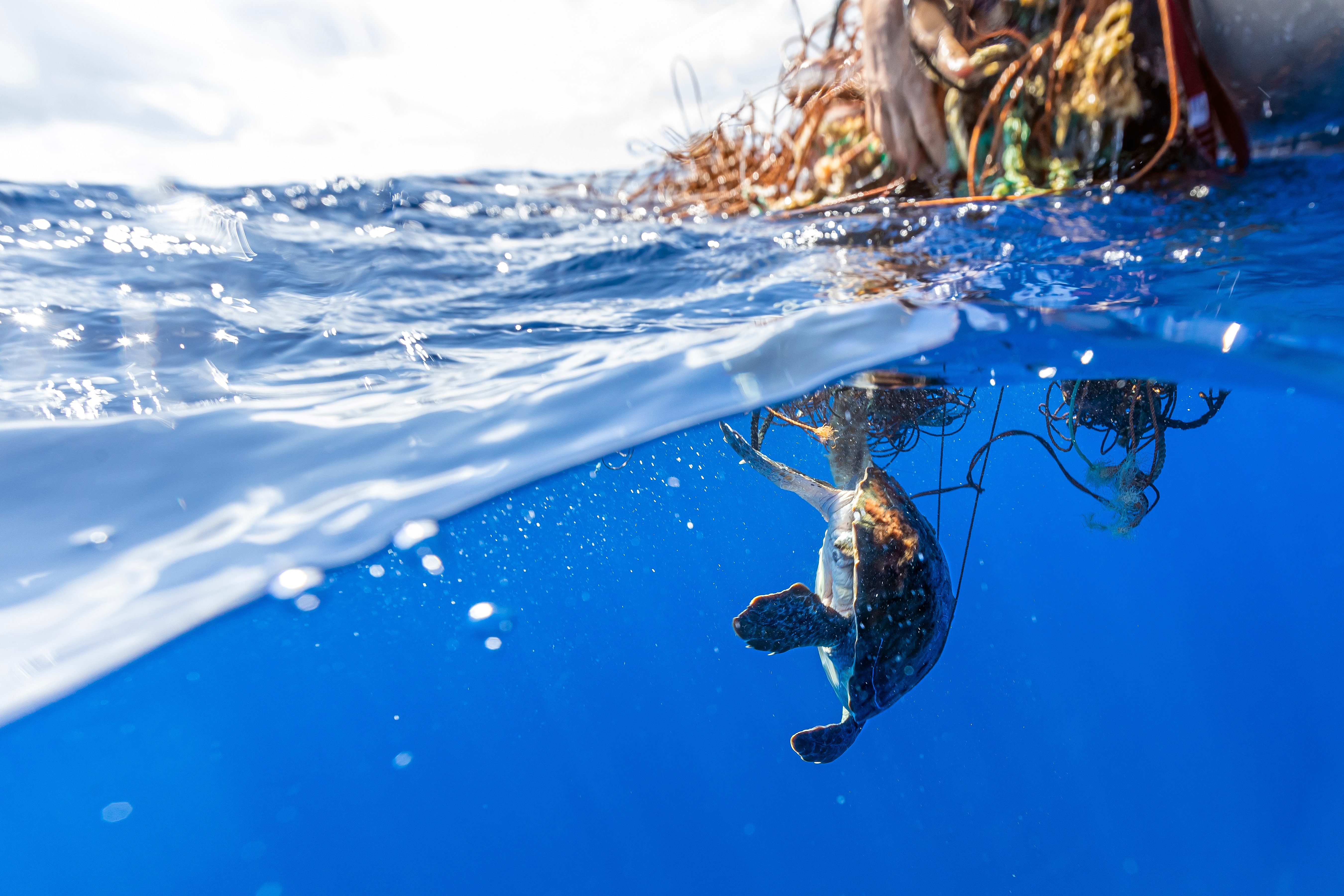
Close to 15 million tons of plastic ends up in the oceans each year, and many turtles become entangled or consume this debris. With jellyfish forming a part of their diet, a floating plastic bag or sheet looks very similar, and are consumed by accident, leading to intestinal and other problems.
As with most species, habitat loss is also a severe issue. Humans like to build next to coastlines for both tourism and industry and our relentless spread is systematically disturbing and removing nesting sites. Coupled with that, light pollution also messes with hatchlings’ ability to navigate towards the ocean when they emerge from their nests, and many end up moving inland by mistake, leading to dehydration, exhaustion and easy pickings for predators.
Climate change also has an effect on population ratios since the sexes of embryos are dictated by temperature. Warmer temperatures are producing more females than there should be and thus skewing the population. In one study, a nesting site produced 87%-99% female hatchlings due to warmer than average temperatures. Alien vegetation and tall buildings can also create unnatural shade, leading to skewed male emergences.
Hope in sight
Thankfully, the plight of the loggerhead is recognised across the world and there are many conservation organisations fighting for their survival and conducting invaluable research that will aid in the future success of the species.
As with many animals on Earth, raining awareness of the species is paramount and their future may well rely upon education and the willingness of companies and individuals alike to aid in their conservation.
Sign up for the newsletter
By clicking on “Subscribe now” I will subscribe to the Conscious Explorer newsletter with all the information about mindful travel. Information on the success measurement included in the consent, the use of the shipping service provider MailChimp, logging of the registration and your rights of revocation can be found in our privacy policy.

